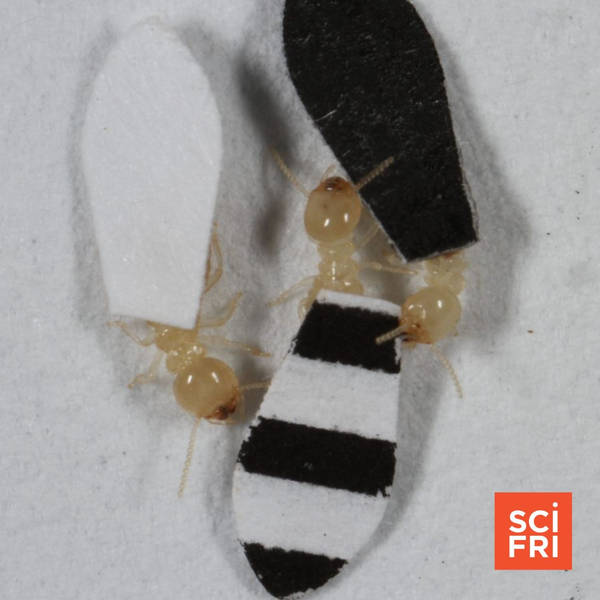
Protecting The ‘Satan’ Tarantula | If Termites Wore Stripes, Would Spiders Still Eat Them?
A team of scientists in Ecuador is on a mission to describe new-to-science tarantula species to help secure conservation protections. And, undergraduate researchers pasted striped capes onto termites’ backs to see if a well-known warning sign would fend off predators.
Protecting The ‘Satan’ Tarantula and Other Lovable Giant SpidersA team of scientists in Ecuador is on a mission to find and describe species of an understudied, often unpopular group of critters: mygalomorphs, a group of large, stocky spiders that includes tarantulas. In late 2023, two of these researchers published a paper in the journal ZooKeys describing two new-to-science tarantula species, including one named Psalmopoeus satanas—affectionately called the “Satan tarantula” because of its erratic behavior.
Tarantulas are understudied in Ecuador, and there are many species left to describe. They’re also threatened by mining, agriculture, and the illegal pet trade. That’s what led Pedro Peñaherrera-R., a researcher at Universidad San Francisco de Quito to found the Mygalomorphae Research Group. Its members are working to describe these spiders and secure conservation protections before they possibly disappear.
Producer Rasha Aridi talks with Peñaherrera-R. and his co-author and fellow group member Roberto José León about how the Satan tarantula earned its name, how they discover and classify spiders, and why we should all show spiders a little more love.
If Termites Wore Stripes, Would Spiders Still Eat Them?The animal kingdom is filled with colors and patterns. Sometimes, those colors are to signal to members of an animal’s own species, in a mating display for instance. In other cases, a bright color or vibrant pattern serves as a warning to potential predators—a signal saying “don’t eat me, I’m toxic.” That type of warning coloration, known as aposematism, can be seen in the bright colors of a poison dart frog, or the black, white, and yellow stripes of a monarch butterfly caterpillar.
Bigger animals, like birds, are known to consider that sort of warning signal when hunting. Researchers at the University of Florida were interested in whether jumping spiders might also take that sort of striped warning coloration into account when choosing their prey. To find out, they applied tiny striped capes to the backs of laboratory termites to study whether those stripes affected the behavior of hungry jumping spiders. They found that while the test spiders did notice the striped termites more than termites wearing solid colors, the spiders were less likely to attack striped termites when given the chance to do so.
Behavioral ecologist Dr. Lisa Taylor joins Ira to discuss the purpose of the project—and former lead undergraduate researcher Lauren Gawel describes the challenges of trying to get termites to dress up as superheroes.
Transcripts for each segment will be available after the show airs on sciencefriday.com.
Subscribe to this podcast. Plus, to stay updated on all things science, sign up for Science Friday's newsletters.
